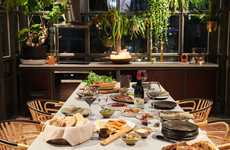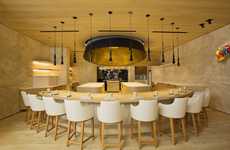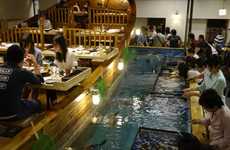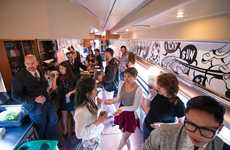



Restaurants tap interactive, sensory elements to creative immersive settings
Implications - Keeping in line with the experience economy, those in the restaurant industry are evolving their dining experiences to incorporate more immersive, multisensory elements. Not only looking to surprise and delight their consumers, restaurateurs are tapping into themed décor, eccentric settings, and mood lighting as a way to mimic places not typically associated with food. From forest-themed experiences to dinners held in libraries, these examples speak to the need to engage consumers in a way that makes them feel immersed, engaged and completely detached from their day-to-day environments.
Workshop Question - How could you create an environment for your consumer that completely detaches them from their day-to-day?
Trend Themes
1. Multisensory Dining - Restaurants use interactive, immersive and sensory elements to enhance dining experience through themes, settings , and mood lighting.
2. Technology Enhanced Dining - Restaurants use technology to create interactive and distinctive dining experiences showcasing 3D projection, story-telling, and virtual reality.
3. Experiential Dining - Restaurants create experiential spaces that provide guests with access to a complete journey of the dining process, cooking libraries, and food concepts.
Industry Implications
1. Hospitality/entertainment Industry - Opportunities to create novel restaurant and dining experiences by incorporating multisensory and technology elements, and creating experiential spaces.
2. Food Services Industry - Opportunities to create customized and immersive dining experiences leveraging chefs, curated menus, and brand identification to capture customers.
3. Design Industry - Opportunities to create unique and customized dining experiences that incorporate sensory, storytelling, and innovative interior design elements that reflect the brand's essence.



























































